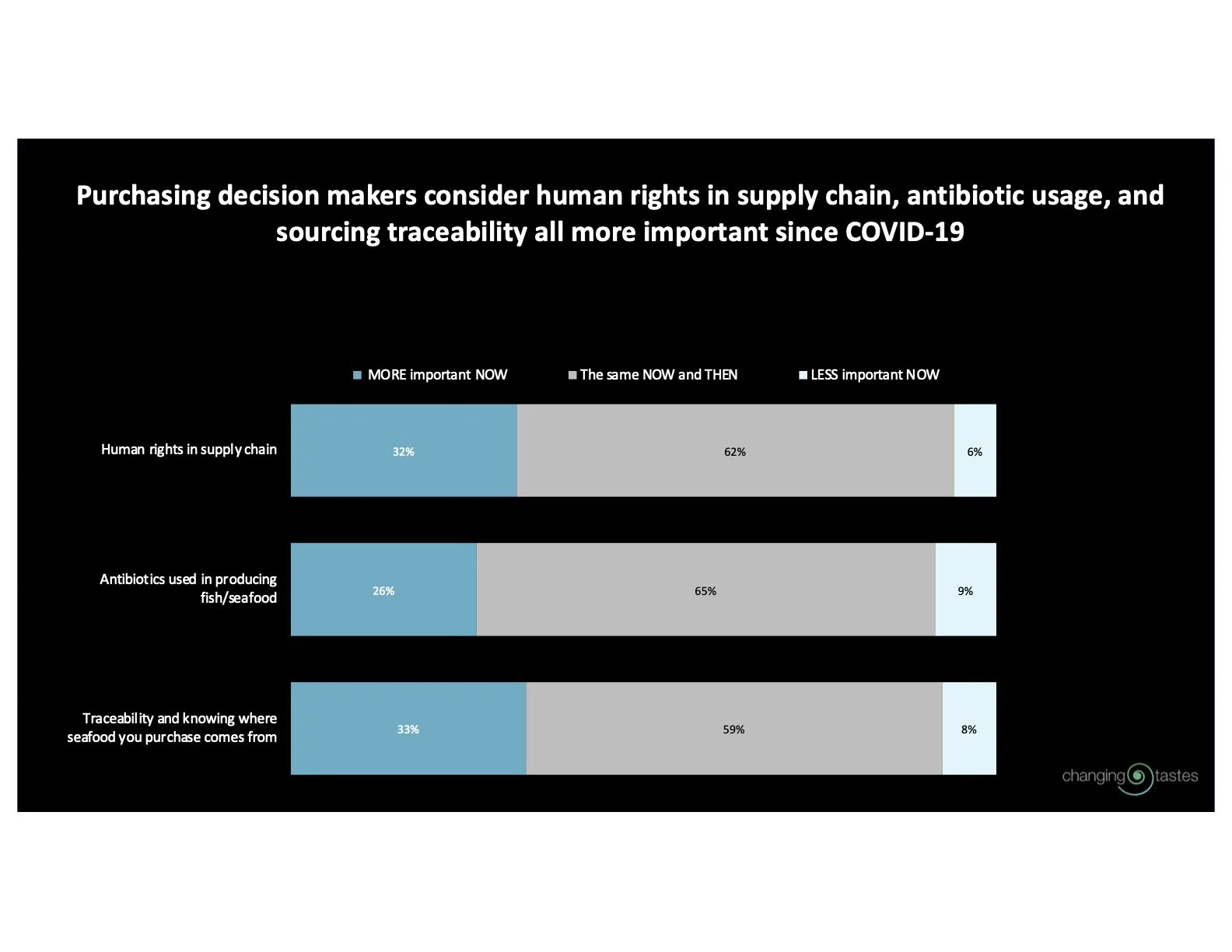BUSINESS TO BUSINESS
THE MESSAGE:
Forced Labor is an Avoidable Risk. Don’t let it stop you from expanding your seafood offerings.
Your business can offer more fish and seafood while avoiding the risk of forced labor in your seafood supply chain. Don’t let it stop you from expanding your seafood offerings. By working with your seafood suppliers, you can directly address this concern about forced labor for at least some types and sources.
Forced labor is a real concern in a global supply chain but is not widespread across all fisheries or the entire world. Forced labor is mainly concentrated in fishing and processing in parts of the Western Pacific, Africa, and Asia, and in species like farmed shrimp, crab, and tuna.
The U.S. Department of Commerce monitors forced labor in the global seafood supply chain through its National Oceanic and Atmospheric Administration (NOAA). NOAA monitors and reports on which countries are at high risk for forced labor in the seafood supply chain. Knowing who caught and processed your seafood and where it was caught and processed is critical.
Avoiding fish and seafood caught and handled in high-risk locations and selecting the right sources and types remove risks to your company and brand from offering more fish and seafood.
Market Insight
During COVID in 2020 and 2021, public awareness of social equity and global supply chains increased and so did their expectations for companies in the food sector. Issues of human rights in the seafood supply chain along with traceability and antibiotic use all became more important considerations to purchasing decision makers as we seek to align with consumer values and protect the integrity of our brands and businesses.


